How to pick a rug colour: 6 simple steps for safe styling
Written by
27 April 2023
•
6 min read
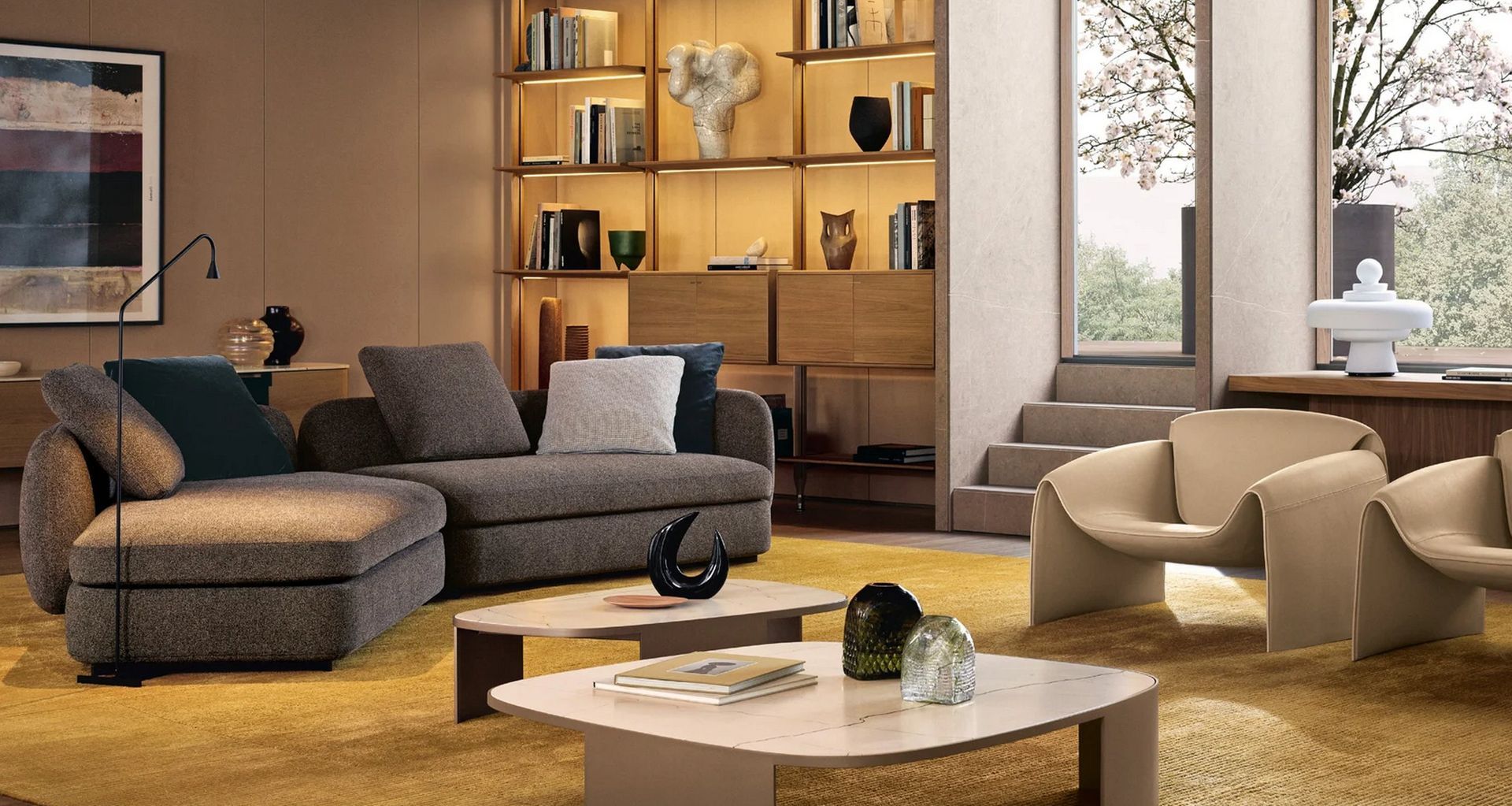
Knowing how to choose a rug colour is a balance of taste and environment. You will naturally have your own preference for colours that you like and dislike while having colours in the existing room you’ll need to work with. By following a few helpful tips, you’ll be able to walk this fine line and hone in on a rug colour that will work for you and your home.
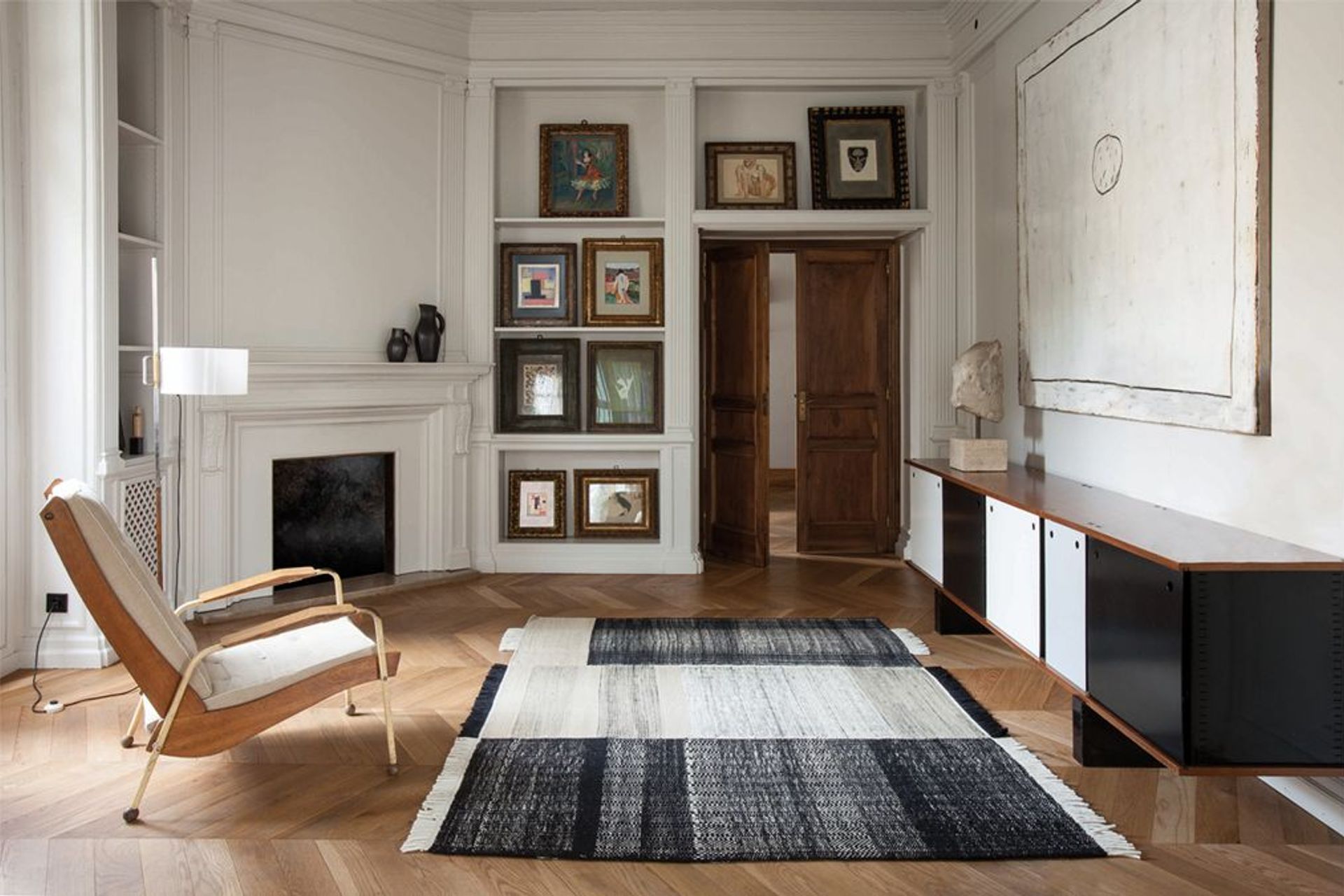
1. Think about the mood you want to create
The first step is to think about the mood you want to create in your space. The atmosphere of a room will directly impact how you and others feel in the space making it an important factor to prioritise. Specific colours evoke different emotions so utilising the right colours will go a long way to helping you enhance the mood you want to establish.
For example, if you want a relaxing atmosphere, you might want to consider a neutral rug colour like beige or grey which is known to have a calming effect in a space. However, if you want to energise a room, a bolder colour like yellow or red will add this vibrancy.
Related article: 9 fantastic floor rugs for your home
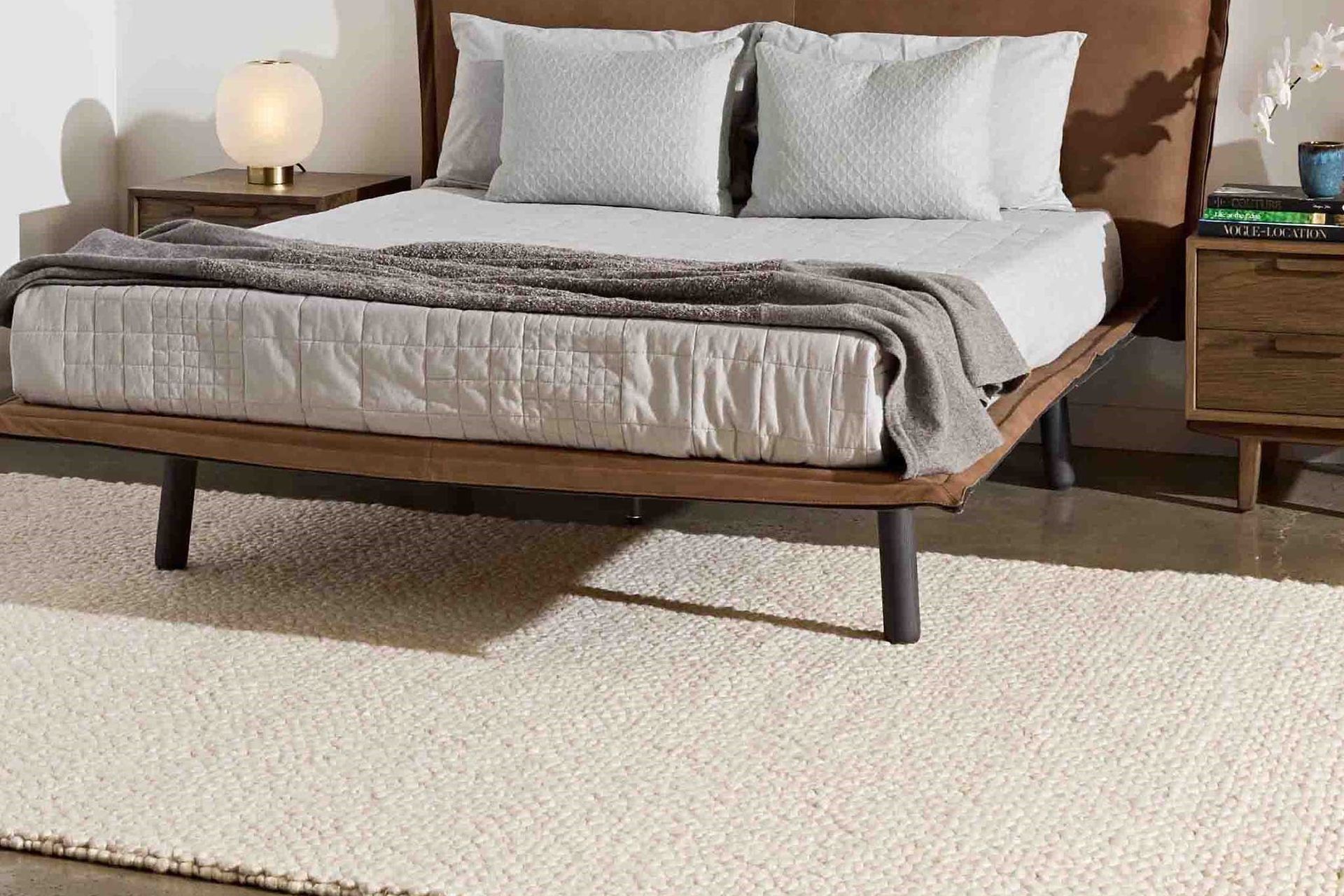
2. Work with the colour scheme of your room
When choosing a rug colour, it's also crucial to consider the colour scheme of your room with respect to the existing wall and floor colours. The walls and floors are akin to the canvas of your room and whatever is placed within it, be it furniture, art or your rug, will have to work in harmony.
You can take several approaches to this. For example, if you have dark hardwood floors a light-coloured rug is a nice foil to brighten up the space. Conversely, if you have a light-coloured carpet, a dark-coloured rug will introduce a bit of contrast and dimension into the space.
If your wall colours are a bold, dominant feature of the room you can use the rug to provide a balance by introducing a neutral tone that will further enhance the impact of your walls. For neutral-coloured walls, a brightly coloured rug is a great way to introduce a focal point and bring the room to life.

3. Understand that the size of your room matters
One factor you might not necessarily think of as a major influence is the size and layout of your room but it's something that absolutely should be addressed when thinking about both the size and colour of your rug.
For instance, if you are dealing with a small room then introducing a loud or bold-coloured rug or even a large patterned rug may overpower the space and make it feel even smaller. In this case, sticking to neutral colours like grey or beige is a much better option as they won’t overpower the room and will make it feel larger.
If you have a big room then you have a bit more freedom as you'll be able to use bolder colours and patterns without the same concern that it will overwhelm the space or get lost in it. A statement area rug is a popular choice to accentuate the grandeur of a large room.
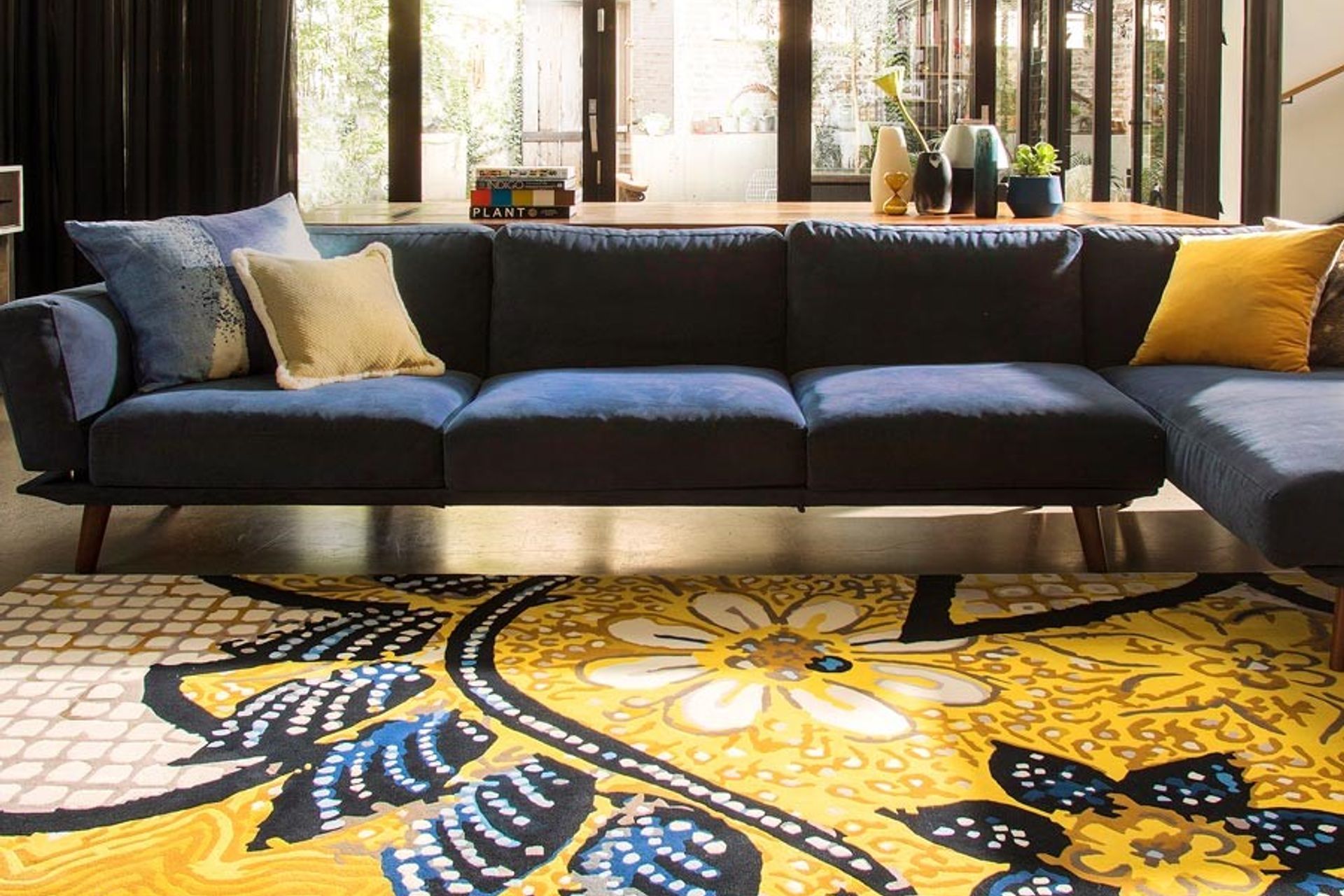
4. Don't forget about your furnishings
Another critical consideration is the colour and patterns of your furnishings. Every living area in the house has any number of furniture pieces, each bringing its own aesthetic style to a space. The best interior designs find ways to tie all these elements together and a rug presents a fantastic opportunity to do exactly that.
The approach can be as simple as making sure your rug colour is consistent with the other furnishings in the room. For example, if you have dark leather couches and armchairs, consider dark rugs; if you have light-coloured upholstery, choose a rug in a light tone.
Alternatively, you may want to create a contrast in a complementary way. If you have several pieces of dark-coloured furniture, you might want to consider a lighter rug to balance things out. And if you have a lot of light-coloured furniture, you might want to consider an area rug with dark colours to ground your space and make it feel more cohesive.

5. Look carefully at your lighting
The lighting in your space is a huge determiner of the mood and styling and it can also have a big impact on the way your rug colour looks. Different colour temperatures from different types of light greatly impact how the colours of your furnishings are perceived.
For instance, natural light will naturally bring out the best and brightest elements of your rug’s colour while artificial lighting can cast a lighter or darker tone depending on the type used. If you have warm-toned lighting then rich and vibrant colours are going to look beautiful; if you have cooler-toned lights then more muted tones are going to look better.
Assessing the nature of your lighting, both natural and artificial during the day and evening is therefore crucial and perhaps one to test out if you have the opportunity.
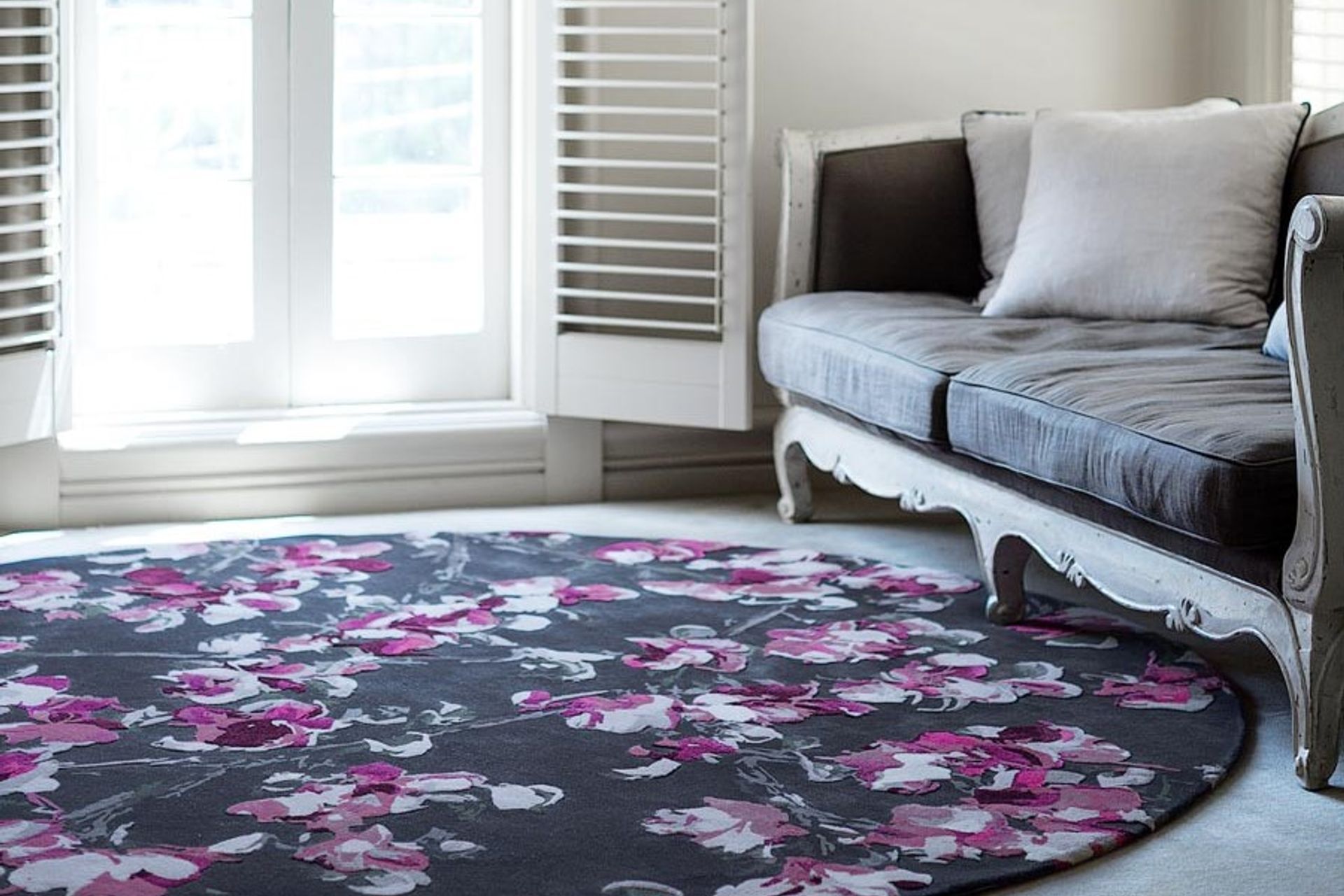
6. Function and lifestyle should also have a say
Last but not least, the purpose of your rug and the lifestyle you lead in your home should also have a say in your final decision.
If the purpose of your rug is to make a strong decorative statement in terms of style then you'll naturally gravitate towards dynamic colours that will draw the eye. If this isn't the case, then subdued choices that will seamlessly blend into the environment will be the better choice.
You and your family's lifestyle, specifically with respect to the room, may also have a bearing. For a kid's room, brighter and more vibrant colours are often preferred to match their energetic and enthusiastic personalities. On the other hand, kids and pets for that matter, are known to create messes that cause stains so darker colours may also be a consideration.
An office or study, on the other hand, might be a space where distraction of any kind is unwanted so muted colours might be the options to go with. Contrary to this, a bold expressive colour rug might be a great conversation starter in a sophisticated dining room or living room. The more you think about function and lifestyle, the more sense it makes.
Related article: 14 different types of rugs and the best ways to use them
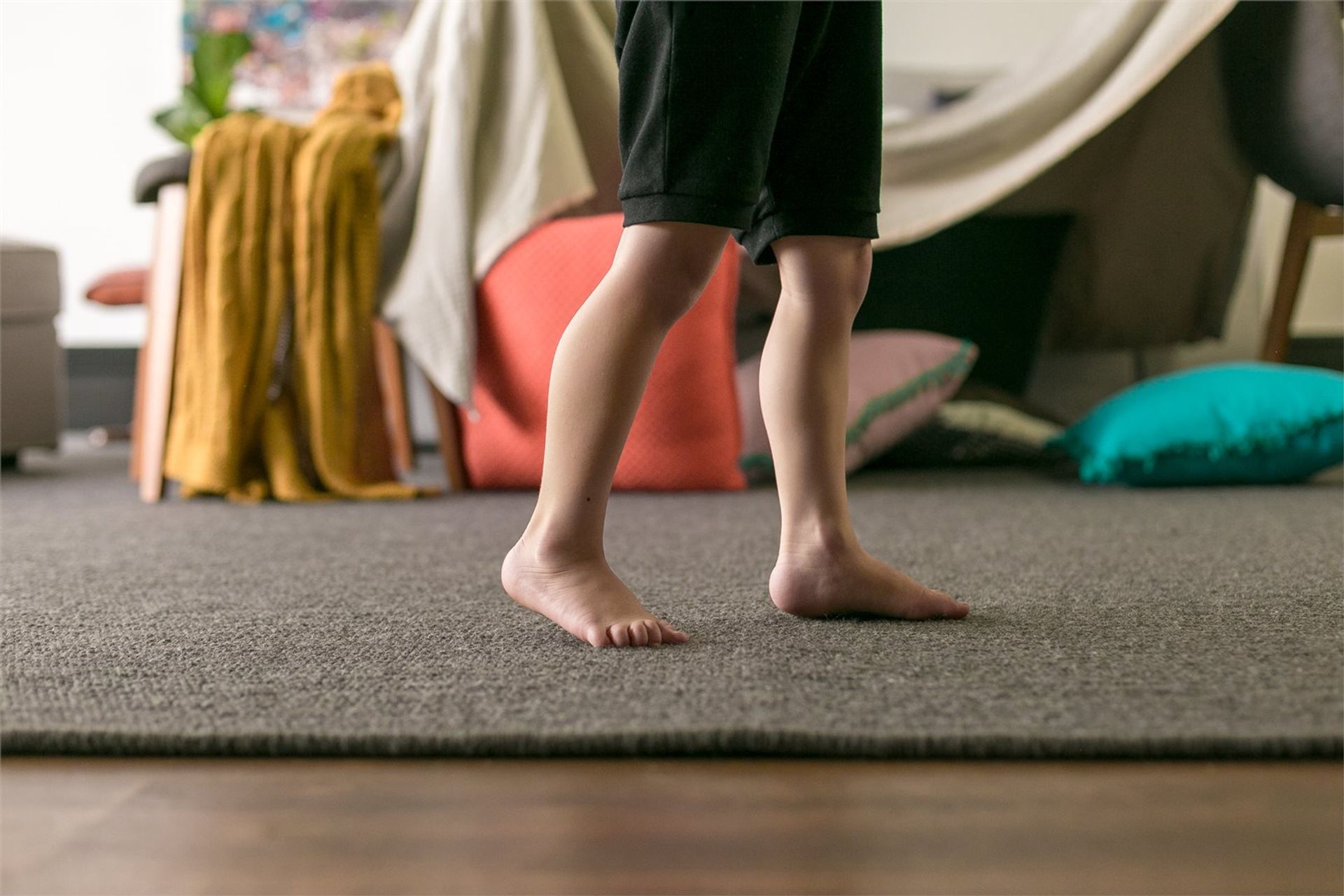
Knowing how to choose rug colours with confidence
By following these 6 simple steps, you'll be covering all the fundamentals for picking the right rug colour for your home. While your own colour preferences are important, as you can see, they are not the only factor to take into consideration for a balanced choice that will serve you and your family for years to come.